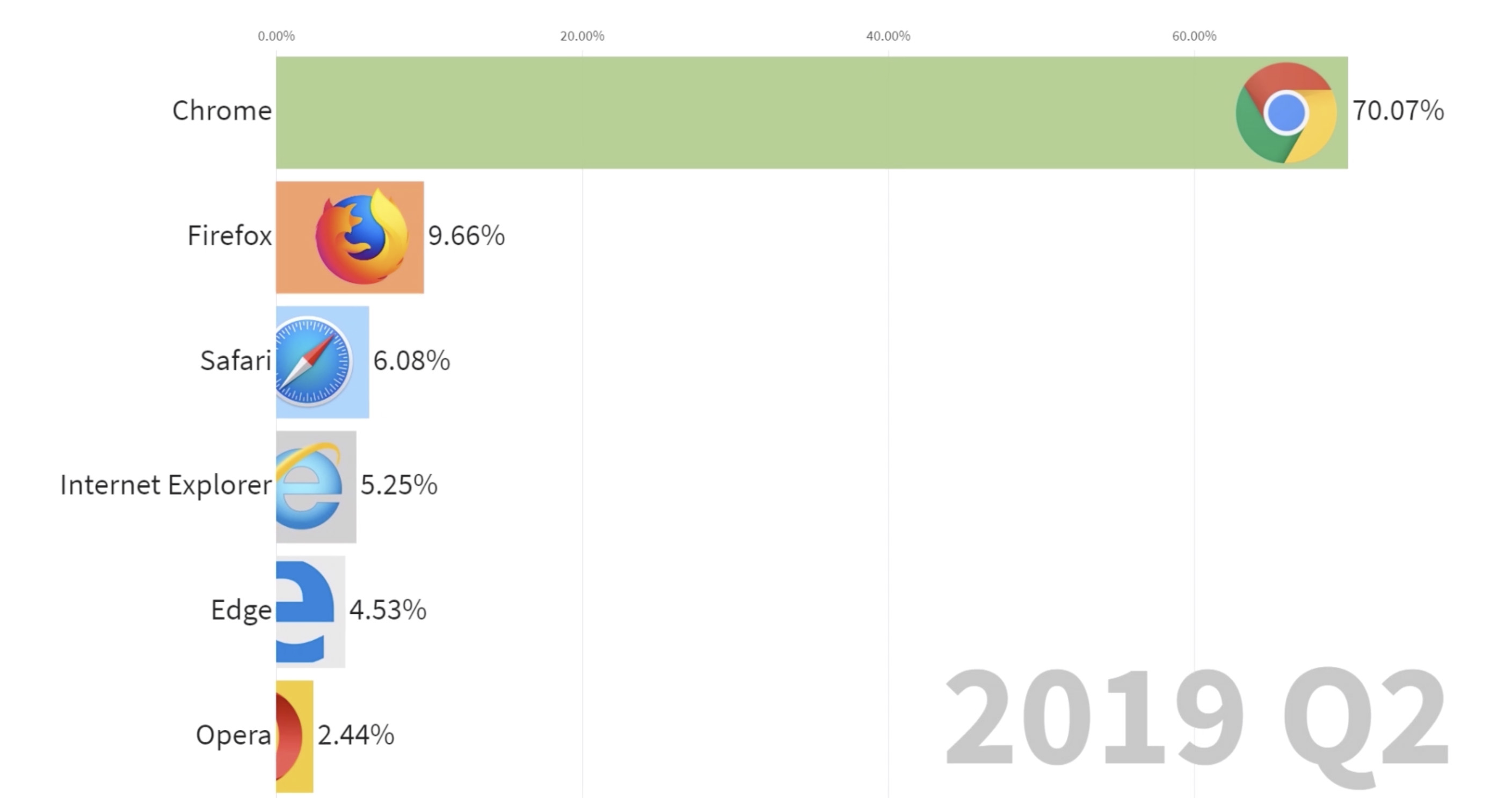Stop trying to make E12 happen. It’s not going to happen
Internet Explorer has been Microsoft’s idle browser for many years. It has been a connection to the world since 1995, allowing all Windows’ users to access the World Wide Web in its full form, since it was Microsoft’s first graphical browser emulator. That’s right: emulator. IE was never a web browser itself. It was merely a part of an add-on package for web navigation in Windows 95 computers. However, IE became so friendly for all types of users that Microsoft decided to keep this cute little pet.
What Microsoft wasn’t anticipating was that in 13 years his good old pal Google would send to the market a browser ready to destroy all of IE’s existence… and then some more.
Back to the nineties. The glory decade for Microsoft. Everybody loved IE, users were able to see open graph sites and play games online on their PCs. Microsoft continue to nurture IE, with newer versions, upgrades, better adjustment to sites with WordPress, and it became the first “browser” to be able to display FlashPlayer based sites. IE’s was there and worked perfectly.
Until 2003. Windows launched Windows 2000. People hated it. The UX was terrible and IE was modified. And then: Godzilla. Sorry, typo. I meant Mozilla. It was still like Godzilla for IE. Mozilla Firefox was a state of the art browser, ready for web developers. It was meant for Linux OS and was intended to be a web browser for front end developers inside Mozilla Foundation but it blended so well with Windows and Apple OS that they launched it for all. And IE took its first hit. A browser for all OS. Not only that. Mozilla is a non profit foundation so Mozilla Firefox was absolutely and completely free of charge. To get IE you would need to buy a Windows computer. Granted, you would also need a computer for Mozilla but you could get any OS and still get Mozilla, for free. Anywhere.
So, Windows launched Windows Me, XP and Windows Vista (but let’s not go there, this was wrong in many levels). And Windows 7. And IE8, first IE version to pass the Acid2 test, which supported better rendering graphics, so a lot of gamers and designers stood by IE until Mozilla launched it own version. But so far, people were still into IE and users from 1995 kept the trust they had 10 years ago. And it worked for a while, a little while though.
In 2008 Google decided to hire a bunch of web developers with ridiculously high salaries from Mozilla Corporation and told them to do the exact same thing they did, but better and for Google. And they did. Google Chrome was born and it was… amazing. Not only did the trial version passed the Acid2 with flying colors, it also surpass Firefox and Apple’s own browser, Safari.
But here’s the thing. Google was a small company and it became really good friends with Microsoft because they supported them with equipment and resources and everything was nice. Also, Google’s CEO wasn’t interested in going into the browser-wars that was happening in 2008. So, they kept this little can-do-it-all monster to themselves… for a few months. It was an all-can-do browser and it had so much potential that the development team practically begged the CEO to go public. So they did, with a little condition: the first company to have Chrome would be Microsoft for a year. And then, after that year, they would launch Chrome for other OS. And that happened. In September 2008, Windows became the first OS to have Chrome. At first, users were kind of worried they would have to use a lot of browsers for different things but Chrome had everything they needed so the user engagement rating dropped at first and then skyrocketed. Google’s CEO forgot all about its friendship with Microsoft and in January 2009, made a deal with Apple and Linux to send Chrome on their way.

What happened to IE in the meantime? Well, Microsoft launched new upgrades and also made a deal with Apple to have a version compatible with MacOS. But making a deal with Apple meant that things were slowly dying.
In 2011, Microsoft launches its new baby: IE9, which supported all of Windows’ previous versions. It included ECMAScript, several CSS3 functions and Web Open Font Format. This meant that HTML5 videos were able to be actually played in IE and also the same font format in all browsers. And most importantly: it passed the new Acid3 test with a 100/100 score.
But all things must come to an end. Google released a new update: having foreseen what mobile devices were becoming, Chrome became in 2012 the default browser for Android devices. Not only that, Google launched Chrome for all iOS devices as well.
IE10 was released that same year. And everything went sideways in the browser-wars for Microsoft. The new browser failed the Acid3 test, had no improvement in HTML5 support and… it was Windows 8’s default browser. A horrible OS must come with an even more horrible browser. Microsoft had to do something and fast. Google launched the Chrome books, laptops with default Chrome as a browser and a weird but very friendly interface; and Mozilla launched Firefox Developers Edition with framework debugging.
Then Edge appeared and it was set to be the best of all browsers, and replace IE to let it rest in peace… finally.
It didn’t work. Edge was even worse. It had some cool new features but new Windows users were used to Chrome due to mobile device usage and old users to IE. So Microsoft decided to give IE one more chance and with Windows 10 came the last of the Windows default browsers: IE11. With fresh new support for HTML5 prefetch, adaptive streaming, and major updates for development tools, it really looked like IE was saved.
Sadly, the last update for IE11 was in late 2016. It’s 2019, and Chrome, Firefox, Safari, and Opera browsers have gone so far fetched on their upgrades that IE11 from 2016 looks like an old VHS player trying to keep up in the era of 4K streaming. Even the new updates for W10 have outgrown IE11. Microsoft has agreed to keep maintaining IE11 as much as they can but development for new features and upgrades has ceased completely for more than two years.

So, the main issue with IE? It was never meant to be a browser. It was merely an add-on emulator for Internet browsing. The base code for IE was closed from start to finish. And, you know what defines a digital product’s future? Just how open its code can be. The initial development team never thought of it as a browser so they never thought that upgrades could be made, and the following developers never changed its baseline, just kept patching things up as they came. Even Edge didn’t work because it works very similar to IE, just the interface was changed a bit and had better development tools. But that’s it.
IE, you were the add-on that welcomed me and most of the 90’s kids to the Internet. The little engine that could and I’m very thankful for your years of service.
But the digital world has changed so much since the last release and we need to keep moving forward. As a QA Specialist, I find that we can’t keep our projects on hold just because a 20 year old emulator wasn’t fully able to display our website as browsers did. I know, it’s contradictory given that my work depends on edge cases and IE rendering issues. But I’m also a Design student who gets frustrated when IE can’t show my vectors the way I want them to be seen.
There will always be incompatibility issues in all OS and there will always be new devices ready to step up. If users are of your concern, nowadays there’s not a single laptop, tablet, phone or PC that doesn’t have Chrome or Mozilla installed.
I’m ready to let go of IE. Microsoft certainly is, what about you?

